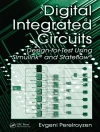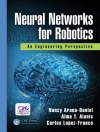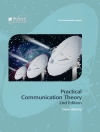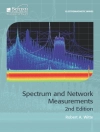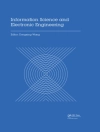Topology control is fundamental to solving scalability and capacity problems in large-scale wireless ad hoc and sensor networks.
Forthcoming wireless multi-hop networks such as ad hoc and sensor networks will allow network nodes to control the communication topology by choosing their transmitting ranges. Briefly, topology control (TC) is the art of co-ordinating nodes’ decisions regarding their transmitting ranges, to generate a network with the desired features. Building an optimized network topology helps surpass the prevalent scalability and capacity problems.
Topology Control in Wireless Ad Hoc and Sensor Networks makes the case for topology control and provides an exhaustive coverage of TC techniques in wireless ad hoc and sensor networks, considering both stationary networks, to which most of the existing solutions are tailored, and mobile networks. The author introduces a new taxonomy of topology control and gives a full explication of the applications and challenges of this important topic.
Topology Control in Wireless Ad Hoc and Sensor Networks:
- Defines topology control and explains its necessity, considering both stationary and mobile networks.
- Describes the most representative TC protocols and their performance.
- Covers the critical transmitting range for stationary and mobile networks, topology optimization problems such as energy efficiency, and distributed topology control.
- Discusses implementation and ‘open issues’, including realistic models and the effect of multi-hop data traffic.
- Presents a case study on routing protocol design, to demonstrate how TC can ease the design of cooperative routing protocols.
This invaluable text will provide graduate students in Computer Science, Electrical and Computer Engineering, Applied Mathematics and Physics, researchers in the field of ad hoc networking, and professionals in wireless telecoms as well as networking system developers with a single reference resource on topology control.
Tabella dei contenuti
About the Author.
Preface.
Acknowledgments.
List of Abbreviations.
List of Figures.
List of Tables.
I: Introduction.
1. Ad Hoc and Sensor Networks.
1.1 The Future of Wireless Communication.
1.2 Challenges.
2. Modeling Ad Hoc Networks.
2.1 The Wireless Channel.
2.2 The Communication Graph.
2.3 Modeling Energy Consumption.
2.4 Mobility Models.
2.5 Asymptotic Notation.
3. Topology Control.
3.1 Motivations for Topology Control.
3.2 A Definition of Topology Control.
3.3 A Taxonomy of Topology Control.
3.4 Topology Control in the Protocol Stack.
II: The Critical Transmitting Range.
4. The CTR for Connectivity: Stationary Networks.
4.1 The CTR in Dense Networks.
4.2 The CTR in Sparse Networks.
4.3 The CTR with Different Deployment Region and Node Distribution.
4.4 Irregular Radio Coverage Area.
5. The CTR for Connectivity: Mobile Networks.
5.1 The CTR in RWPMobile Networks.
5.2 The CTR with Bounded, Obstacle-free Mobility.
6. Other Characterizations of the CTR 63
6.1 The CTR for k-connectivity.
6.2 The CTR for Connectivity with Bernoulli Nodes.
6.3 The Critical Coverage Range.
III: Topology Optimization Problems.
7. The Range Assignment Problem.
7.1 Problem Definition.
7.2 The RA Problem in One-dimensional Networks.
7.3 The RA Problem in Two- and Three-dimensional Networks.
7.4 The Symmetric Versions of the Problem.
7.5 The Energy Cost of the Optimal Range Assignment.
8. Energy-efficient Communication Topologies.
8.1 Energy-efficient Unicast.
8.2 Energy-efficient Broadcast.
IV: Distributed Topology Control.
9. Distributed Topology Control: Design Guidelines.
9.1 Ideal Features of a Topology Control Protocol.
9.2 The Quality of Information.
9.3 Logical and Physical Node Degrees.
10. Location-based Topology Control.
10.1 The R&M Protocol.
10.2 The LMST Protocol.
11. Direction-based Topology Control.
11.1 The CBTC Protocol.
11.2 The Dist RNG Protocol.
12. Neighbor-based Topology Control.
12.1 The Number of Neighbors for Connectivity.
12.2 The KNeigh Protocol.
12.3 The XTC Protocol.
13. Dealing with Node Mobility.
13.1 TC Design Guidelines with Mobility.
13.2 TC in Mobile Networks: an Example.
13.3 The Effect of Mobility on the CNN.
13.4 Distributed TC in Mobile Networks: Existing Solutions.
V: Toward an Implementation of Topology Control.
14. Level-based Topology Control.
14.1 Level-based TC:Motivations.
14.2 The COMPOW Protocol.
14.3 The CLUSTERPOW Protocol.
14.4 The KNeigh Lev Protocol.
14.5 Comparing CLUSTERPOW and Kneigh Lev.
15. Open Issues.
15.1 TC for Interference.
15.2 More-realistic Models.
15.3 Mobility and Topology Control.
15.4 Considering Multi Hop Data Traffic.
15.5 Implementation of TC.
VI: Case Study and Appendices.
16. Case Study: TC and Cooperative Routing in Ad hoc Networks.
16.1 Cooperation in Ad hoc Networks.
16.2 Reference Application Scenario.
16.3 Modeling Routing as a Game.
16.4 A Practical Interpretation of Truthfulness.
16.5 Truthful Routing without TC.
16.6 Truthful Routing with TC.
16.7 Conclusion.
A: Elements of Graph Theory.
A.1 Basic Definitions.
A.2 Proximity Graphs.
B: Elements of Applied Probability.
Bibliography.
Index.
Circa l’autore
Paolo Santi is Researcher at the Instituto di Informatica e Telematica del CNR in Pisa, Italy, a position he has held since 2001. He received the ‘Laurea’ Degree and the Ph D in Computer Science from the University of Pisa in 1994 and 2000. respectively. During his career, he visited the School of Electrical and Computer Engineering, Georgia Institute of Technology, in 2001, and the Department of Computer Science, Carnegie Mellon University, in 2003.
During his Ph D Studies, Dr. Santi’s research activity focused on fault-tolerant computing in multiprocessor systems. Starting from 2001, his research interests shifted to wireless ad hoc networking, with particular focus on the investigation of fundamental network properties such as connectivity, network lifetime, and mobility modeling, and on the design of energy-efficient protocols.
Dr. Santi has contributed more than twenty papers in the field of wireless ad hoc and sensor networking, and has been involved in the organizational and technical committee of several conferences in the field. Dr. Santi is a member of ACM and SIGMOBILE.


